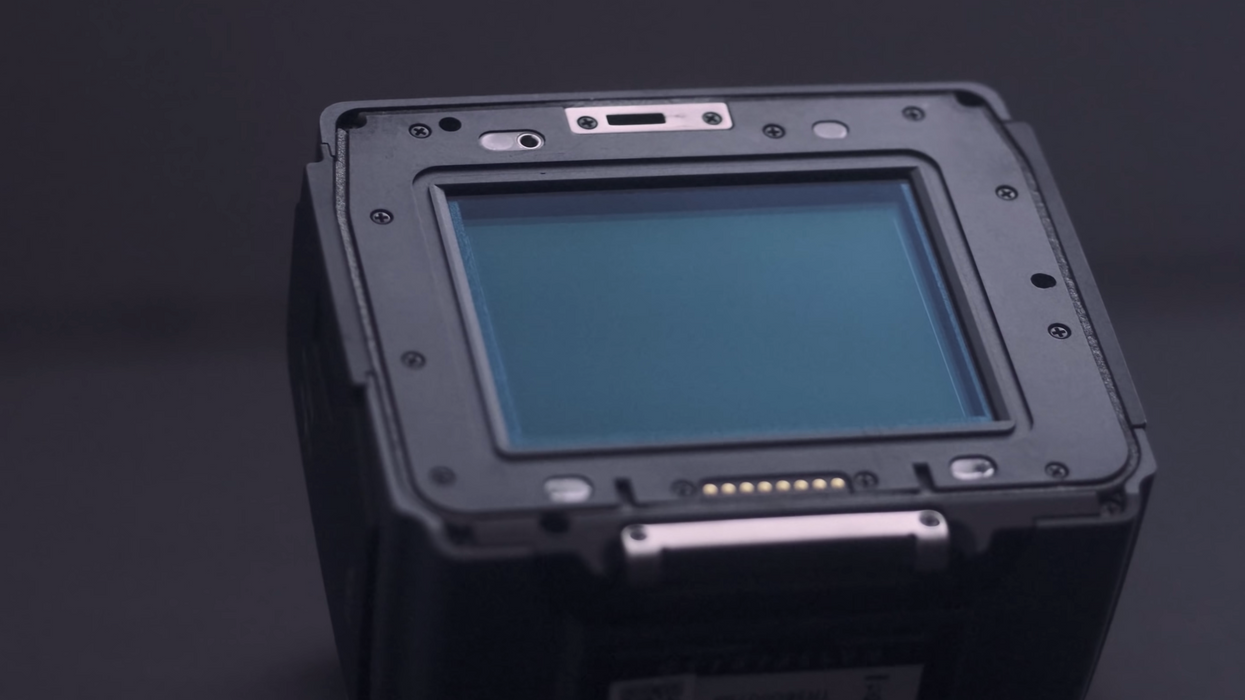Indie IMAX: Medium Format Anamorphic With Hasselblad's H6D-100C
This could be the next 5D MK II revolution.

Hasselblad is one of the oldest and most well-regarded camera companies in the entire world. Almost exclusively, though, it has been photography-centric in its function, ergonomics, and applications. This has changed with Hasselblad's H6D-100c. We actually covered the significance of this new evolution of Hasselblad cameras in 2016, and it's a great primer for this latest update.
YouTuber GxAce has taken medium format video to the next echelon by mounting an anamorphic projector lens to an H6D-100c, creating a truly incredible DIY look.
To be clear, the sensor is bigger than the Alexa 65. Just remember that.
Here's a chart so you can compare sensor sizes.

Suddenly, the nearly $30,000.00 price tag doesn't sound too bad.
Just to quickly recap, in this little handheld package, we have RAW 4K video internally recorded to CFast 2.0, IMAX-sized images, Hasselblad lenses, Hasselblad color science, Hasselblad branding (ahem...thank you, sir and/or madame), all for roughly what it would cost to rent an Alexa 65 for three days. Sounds good to me.
Keep listening. There are some problems.
If you used the 5D Mark II in its time (many of us still do, actually), you'll note that large sensors have distinct character flaws, namely, rolling shutter. The H6D suffers the same problems...only it's much, much worse.
If you don't know, rolling shutter occurs on a digital sensor because the camera reads the sensor top to bottom, line by line. During a more vigorous camera movement, the subject will have moved from one spot to another before the sensor readout has finished, resulting in the unmistakable jello effect, skewing vertical lines to make them look slanted or diagonal. One of the worst examples I've seen first-hand was in the Sony a6300.
If rolling shutter is bad on a Super35 sensor, imagine how bad it must be on a sensor that's exponentially larger.
You don't have to. Watch this:
It's well worth it, watching the whole thing, but the video demo kicks in around the 6:45 mark. Look for the jello, wobbly effect. You won't have to try too hard.
While the photos are truly breathtaking from this anamorphic medium-format setup, the video has such horrendous rolling shutter that I was totally distracted and taken aback.
There's an upside, though.
It comes with a lot of caveats (as follows). If you can manage to shoot a film that has little movement from the camera and very little action from the talent; if you can deal with the painstakingly finicky ".3FV" video codec and spend an entire day transcoding into ProRes and changing out your CFast2.0 cards out every two minutes; if you can somehow custom machine your own lens adaptor for vintage anamorphic projector lenses from the '60s; if you're the type of person who cannot help but try something new, challenging, and unpredictable...then the fruits of your labor will be so much sweeter than just about everyone else around you. If good care is taken, then this sort of setup can produce literally epic-style imagery.
There's only one true reason to shoot this way: You really want to.
Medium format videography is still in its infancy with regarding its presence in the indie film world. That being said, so was full-frame videography less than a decade ago. The first time I ever saw full-frame video was Vincent Laforet's 'Reverie' and it blew my mind. It wasn't perfect but it was damn exciting to see a truly, genuinely cinematic look from a camera that I could get at my local camera store. I get that same giddy feeling from this ambitious setup with medium format video.
With cameras like the H6D-100c and Hasselblad's mirrorless X1D and with the likes of Fuji and Pentax in the medium format game as well, medium format video (and, no doubt, its anamorphic iterations) is likely to have a similar flight plan to that of the 5D Mark II and full-frame video.
What about you? What do you think about medium format video? Also, check out this insane 10K timelapse video shot on a Phase One medium format camera.
Source: GxAce












